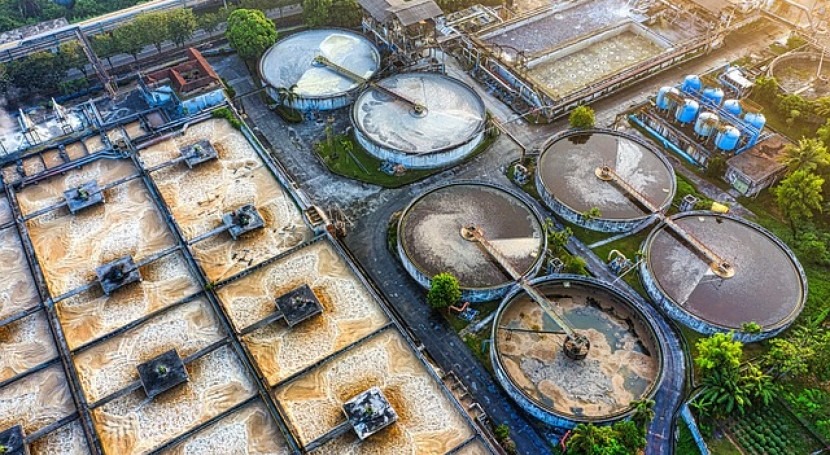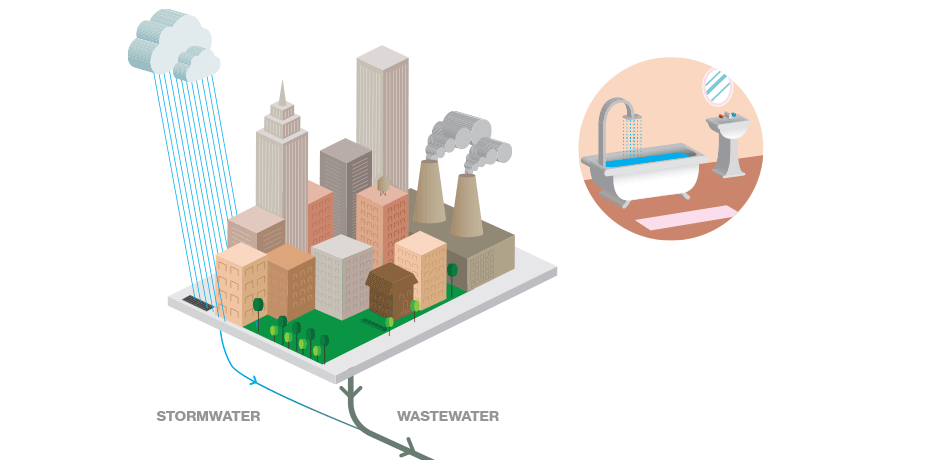Comprehensive Guide to Hazardous Waste Water Treatment Processes
Comprehensive Guide to Hazardous Waste Water Treatment Processes
Blog Article
Strategic Approaches to Boost Drainage Therapy Effectiveness and Lessen Ecological Impact
In the world of waste water treatment, the mission for boosted efficiency and decreased environmental effect is a continuous obstacle that demands strategic remedies. The assimilation of advanced treatment modern technologies, energy-efficient procedures, resource recuperation strategies, enhanced nutrient elimination strategies, and wise tracking and control systems represents a complex framework for dealing with these pushing problems.
Advanced Treatment Technologies
Innovative membrane layer purification systems have actually revolutionized innovative wastewater therapy processes, substantially boosting the removal of contaminants. This innovation has actually confirmed to be highly reliable in removing a large range of impurities, including pharmaceuticals, hefty metals, and natural compounds, which are typically testing to remove through typical treatment approaches.
Additionally, membrane layer filtering systems offer many benefits over traditional therapy strategies. In addition, these systems are extremely functional and can be quickly incorporated into existing therapy plants or utilized as standalone units for decentralized applications.
Energy-Efficient Processes
The integration of energy-efficient procedures in wastewater therapy systems is essential for maximizing resource use and lowering operational costs. One essential strategy to boosting energy effectiveness in wastewater therapy is the use of advanced aeration systems, such as fine bubble diffusers or surface area aerators, which can improve oxygen transfer effectiveness and reduce energy intake.
Moreover, maximizing process control and automation through making use of advanced sensing units and checking systems can boost overall power performance by changing procedures in real-time based on actual need and conditions. Carrying out energy audits and regularly monitoring power efficiency indications are important methods to recognize areas for enhancement and track energy-saving efforts effectively. Generally, the fostering of energy-efficient procedures in wastewater treatment not only profits the environment but likewise adds to long-lasting price savings and operational sustainability.
Resource Recuperation Techniques
With an emphasis on optimizing source utilization and sustainability in wastewater therapy systems, the execution of source healing approaches arises as a critical facet in improving operational effectiveness. Resource recovery techniques in wastewater treatment entail the identification and extraction of beneficial sources from the waste stream, thus transforming what was once taken into consideration waste right into a useful possession. By implementing resource healing techniques such as nutrient elimination and recovery, power generation from raw material, and the manufacturing of recyclable water, wastewater treatment plants can lessen environmental effect while making best use of effectiveness.

Boosted Nutrient Removal Strategies
Carrying out innovative nutrient elimination methods is necessary for enhancing the efficiency of wastewater therapy systems. One of the vital techniques used for enhanced nutrient removal is the procedure of biological nutrient removal (BNR), which entails the elimination of nitrogen and phosphorus via organic procedures.

In enhancement to BNR, advanced therapy approaches such as membrane layer bioreactors (MBRs) and built wetlands can also be utilized to improve nutrient removal effectiveness. MBRs make use of membranes to accomplish top quality effluent requirements by effectively removing nutrients and suspended solids. Created marshes mimic natural wetland processes to get rid of nutrients through plant uptake, microbial activity, and sedimentation. By integrating these innovative nutrient elimination techniques into wastewater therapy districts, markets and systems can efficiently decrease nutrient contamination and protect the setting.
Smart Monitoring and Control Systems
Using innovative modern technology, the assimilation of wise tracking and look what i found control systems transforms the operational effectiveness of wastewater treatment facilities. These systems incorporate innovative sensors and data analytics to continuously keep an eye on vital criteria such as pH degrees, turbidity, dissolved oxygen, and flow rates in real-time. By accumulating and evaluating this data, operators can get important understandings into the performance of the therapy processes, making it possible for positive adjustments to maximize treatment performance.
Smart tracking and control systems also sustain remote tracking capacities, allowing drivers to access real-time information and control functions from off-site areas. This remote availability enhances functional versatility and responsiveness, enabling speedy interventions in situation of system malfunctions or variations in influent high quality. In addition, the anticipating maintenance capacities of these systems aid protect against equipment failures and reduce downtime, eventually enhancing the total reliability of wastewater therapy operations (Waste Water Treatment).
Final Thought
In verdict, calculated strategies such as advanced therapy technologies, energy-efficient processes, resource recuperation approaches, improved nutrient removal methods, and smart surveillance and control systems play a crucial role in enhancing wastewater treatment effectiveness and lessening ecological influence. By implementing these techniques, wastewater treatment plants can improve their general efficiency, minimize power intake, recover important resources, and make sure conformity with ecological guidelines. These techniques are vital for reliable and sustainable wastewater management techniques.

In conclusion, critical techniques such as sophisticated treatment innovations, energy-efficient procedures, source healing techniques, improved nutrient removal techniques, and wise tracking and control systems play a crucial role in enhancing wastewater therapy efficiency and lessening ecological effect.
Report this page